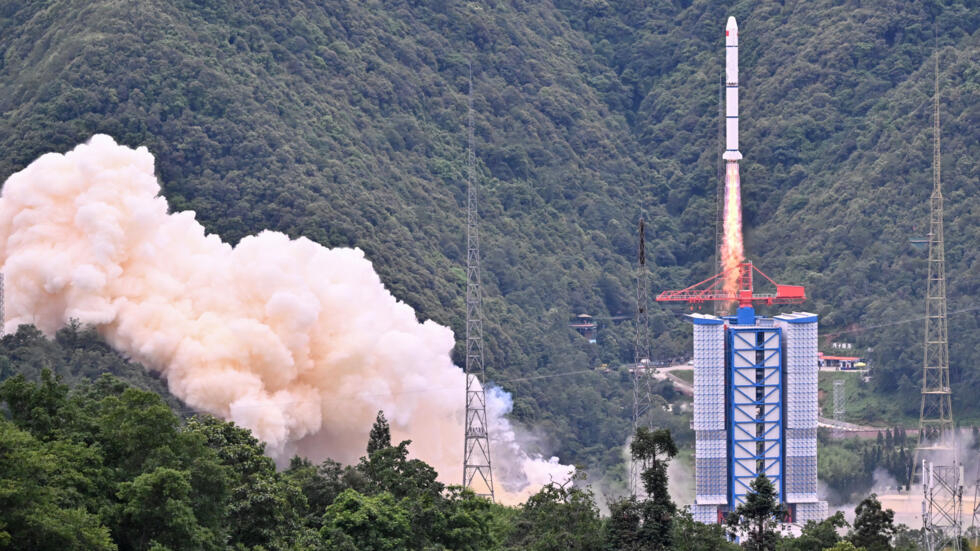Chinese-French mission to study exploding stars launched successfully
In the past weekend, the Space Variable Objects Monitor (SVOM) — a gamma- and X-ray telescope satellite — was launched from the Xichang Satellite Launch Center in China. The satellite will study the afterglows of gamma-ray bursts; intense flashes from exploding stars.
The launch from the Xichang Satellite Launch Center in Xichang, Liangshan, Sichuan, China. Credit: Adek Berry, AFP.
Gamma-ray bursts (GRBs) are powerful explosions in the Universe, stemming from the collapse of massive, young stars, or from the collision of compact objects such as the ultra-dense neutron stars.
More than 50 years after their discovery, today we have deployed a new, sensitive eye to detect and study them in even greater detail than previously possible. At 7 AM UTC, the SVOM spacecraft was launched by the Long March 2C rocket, taking off from the Xichang launch base in China.
Exploding stars
SVOM is a Chinese-French spacecraft, equipped with four telescopes covering both the hard X-ray and gamma-ray bands (this is where GRBs shine the brightest), as well as the visible spectral range. This unique combination of instruments will allow both to detect more numerous and more diverse gamma-ray bursts, providing a full census of these breath-taking explosions. Moreover, it will also localize GRBs with great accuracy in the sky, allowing further follow-up from ground-based telescopes.
At DAWN, two researchers are part of the SVOM science team, and have been preparing also via the design and development of the Nordic Transient Explorer (NTE), a spectrograph to be installed at the Nordic Optical Telescope, in the Canary Islands.
Johan Fynbo, professor at the Cosmic Dawn Center, explains: "NTE will allow to both measure the distance to these explosions and to probe in detail the chemical composition of the environment where GRBs go off".
Lise Christensen, also associate professor at DAWN and part of the SVOM science team, concludes: "Since GRBs reside in the most distant reaches of the cosmos, when we observe them we are learning a bit about the place where they were born, which corresponds to a long time ago and much closer to the Big Bang, and allows us to know better the infancy of the Universe".
More than science…
SVOM, led by French and Chinese institutions, with the participation of other European countries, will also offer an opportunity to have a lively collaboration with our Chinese colleagues.
In an epoch where political division and grasp for influence seem to build walls and separation worldwide, it is refreshing that scientific curiosity still joins together humans from any country, mesmerised by the rich and surprising cosmos that is home to all of us.
This article was written by Daniele Bjørn Malesani, postdoc at DAWN.
Tags: Gamma-ray bursts


